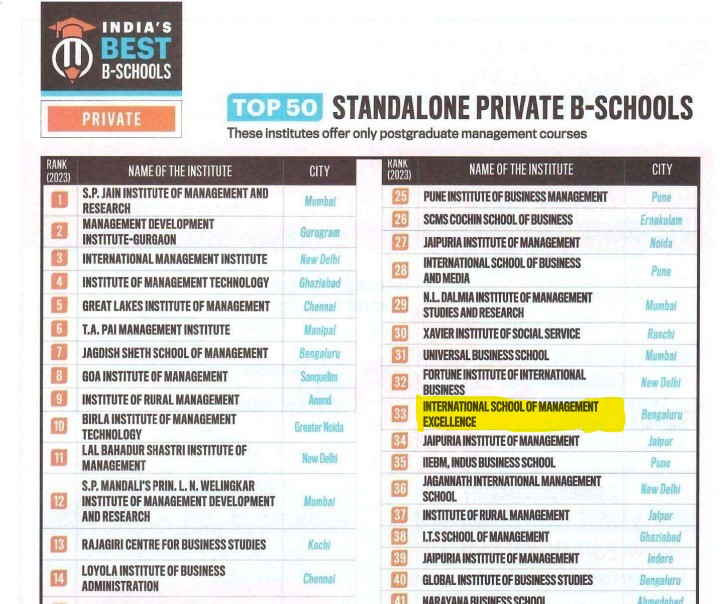XYZ Pharma industry gradually is in a robust growth, reaching the market potential after Covid-19.Pharma industry growth well aligned with its strategic vision, industry is proactively articulating plans to expand its business operations. This proactive initiative aims to enhance long-term feasibility along with the capitalization of emerging opportunities for expansion, during this growth phase there is a conflict occurs between two shareholders in the company. Conflict occurs due to difference of opinion among the shareholders. Due to this conflict there is a gradual slowdown in the growth performance. Due to this personnel conflict, it affects the productivity in the industry and it is not a functional conflict. There is difference between Functional conflict and Dysfunctional Conflict, it’s purely of dysfunctional conflict which is not good for the organization. Whereas the functional conflict is called as the positive conflict it enhances the organizational productivity, dysfunctional conflict will lead to decrease in performance. Majorly it happens due to different personality traits and lack of interpersonal relationship among the individuals. Conflict in XYZ industry arises due to difference of opinion and interests of two shareholders not aligned. There is lot of potential opposition or incompatibility, cognition, and personalization, intentions, behavior, and outcomes.
Majorly potential opposition stage of conflict has three main areas where conflict may develop: due to poor communication among two shareholders, organization structure of the company is not designed well and personal variables doesn’t match among two shareholders. This case is about the conflict management and resolving the conflict between the shareholders through conflict management resolution strategies. The first two stage like Cognition and personalization are perception of the conflict between two shareholders arises. At the later stage the intentions stage has competing, collaborating, avoiding, accommodating, or compromising is the most challenging part of the conflict and resolving stage.
Keywords: Conflict, Functional and Dysfunctional conflict, conflict resolution.
XYZ Pharma is one of the emerging pharma business and started in the corporation which was created in 1984, Bengaluru- Karnataka. This organization is saw enormous growth and global expansion under the Mr. KK inspirational leadership, its operations globally extended through acquisition, merger, partnerships and strategic investment with sustained business practices. Under Mr. KK leadership, XYZ thrived on decentralized organizational structure. Empowering employees to participate in decision-making processes. His belief in the collective wisdom of the workforce fostered a culture of innovation and inclusivity. Through regular forums and open communication channels, employees felt valued and empowered to contribute their ideas and expertise. In the bustling corridors of XYZ Company, the CEO, Mr. KK, was renowned not just for his business acumen but also for his humility and empathy towards his employees. He achieved numerous awards. He is very passionate and diligent in his work. But unfortunately, Mr. KK was diagnosed with cancer, sending shockwaves through the company. With heavy hearts, the employees worried who will replace Mr. KK’s Position. Renowned shareholders and board members Mr, Mr., and Mr. Y have more Percentage of Stake than Mr. But both have same level of influence in the company. Mr. X is empathetic, very supportive, has very good vision to take the company to the higher level, and most importantly, Mr. X has a genuine interest in the well-being of the company’s workforce struck a chord with Mr. KK, he appreciated how Mr. took the time to engage with employees, listen to their concerns, and actively work towards solutions, fostering a sense of unity within the organization thereby adding value to company‘s progress. Mr. Y, although a shrewd investor, often prioritized profit margins over employee satisfaction. His approach clashed with Mr. KK ethos of putting people first, creating a subtle tension between them. Mr. KK admired Mr. X commitment to nurturing a positive work environment. Mr. X frequently advocated for initiatives like employee wellness programs, career development opportunities, and fair compensation packages, aligning perfectly with Mr. KK‘s values. As the CEO, Mr. KK believed that sustainable growth stemmed from a harmonious balance between profitability and employee satisfaction. The dilemma of the case is now two stockholders, Mr. X and Mr. Y, are aiming/ competing for the same role as the company’s next CEO since Mr. KK, the current CEO, has been diagnosed with stage 4 cancer. As there is no unity of command because of shareholder disputes, and staff are unsure of whom to obey and follow. The company is in a very critical stage as a result of employees who are disoriented, unmotivated, and not receiving the proper recognition and rewards. As a result, employee satisfaction levels are steadily declining, which results in extremely low organizational performance and a loss of market share, while shareholders are preoccupied with competing for position.
In this situation, where the CEO of a company is at a critical stage suffering from stage 4 cancer, there is a conflict between two shareholders regarding the determination of the next CEO, one approach to resolve the conflict could be through the application of the Contingency theory. The Contingency theory posits that there is no one best way to manage an organization or to make decisions. Instead, the most effective approach depends on the unique circumstances or contingencies faced by the organization. Here’s how this theory could be applied in this scenario, the first step would be to thoroughly assess the current situation of the company, taking into account the CEO’s health condition, the specific requirements of the role, the company’s strategic goals, the skills and competencies required in a CEO position. Identify the key contingencies or factors that are influencing the decision-making process. This could include factors such as the company’s industry, size, stage of development, competitive landscape, the preferences and values of other stakeholders besides the two shareholders. Matching leadership styles with contingencies to determine which leadership style would be more effective for the identified contingencies. This could involve considering factors such as whether the company requires stability or rapid change, the level of uncertainty in the industry, and the need for innovation. Selection of next CEO based on the assessment of the situation and the identified contingencies, the shareholders can then make a more informed decision about the selection of the next CEO. This decision should aim to align the leadership style and capabilities of the chosen candidate with the specific needs and the current challenges in the company. If there is a conflict between the shareholders regarding the choice of the next CEO, the application of Contingency theory can help facilitate discussions and negotiations by focusing on the objective assessment of the situation and the identification of the most suitable candidate based on the contingencies faced by the company. Overall, by applying the principles of Contingency theory, the shareholders can work towards resolving their conflict and making a decision about the next CEO that is well aligned with the needs and circumstances of the company.
The Corporation has now brought in a conflict management expert, to address the issue as it becomes global, taking into consideration/observing, the personnel, work environment, and company culture. Management team, organizational structure for several weeks, to resolve shareholder disputes, to boost employee happiness and productivity, thereby to improve company’s performance and expand its worldwide market share. When the conflict between Person X and Person Y reached a boiling point, a conflict expert stepped in to facilitate resolution. Recognizing the equality of their influence despite the disparity in stake percentages, the expert proposed a voting process utilizing various conflict resolution styles and applying contingency theory. Implementing a conflict resolution system with board member voting can address shareholder conflicts, ensuring fairness. This approach enhances trust among employees, fostering confidence in the organization. By involving board members, decisions are perceived as impartial and transparent. It establishes a structured process for resolving disputes, promoting organizational stability. Employees feel reassured knowing conflicts are handled through a formal, accountable procedure. Board involvement signals commitment to equitable resolutions and corporate integrity. The voting system underscores the organization’s dedication to fair decision-making. Shareholders perceive the process as inclusive, promoting cooperation and unity. Ultimately, this system cultivates a culture of trust and collaboration within the organization. Person X and Person Y, each advocating fiercely for their vision, faced the choice between competitive, collaborative, avoiding, accommodating, or compromising approaches. The expert guided them through the merits and potential outcomes of each style, urging them to consider the long-term implications for the company. After careful deliberation, Person X and Person Y opted for a collaborative approach, recognizing the value of pooling their strengths and finding a mutually beneficial solution. Through open dialogue and compromise, they reached a consensus that honored both their perspectives while prioritizing the company’s best interests. The collaborative effort not only resolved the immediate conflict but also strengthened the partnership between Person X and Person Y, laying the groundwork for more effective collaboration in the future. As they moved forward together, the company benefited from their newfound unity and shared commitment to success. The organization has completed voting, with only the board of directors eligible to cast votes for respective shareholders. Following the tally, person X has secured more votes than person Y, as declared in the results. This outcome reflects the decision-making of the board regarding the candidates. Person X’s lead over person Y indicates that they all want supportive leadership then the autocratic leadership. The voting process underscores the democratic nature of the organization’s decision-making. The outcome may influence future decisions and dynamics within the organization’s leadership structure. Overall, the voting process has clarified the composition of the board and the preferences of its members. Initially during the conflict, the company was dysfunctional which is also known as bad stress leading to decrease in the productivity of employees, employees not being satisfied, no rewards and recognition, no training programs. And later once the conflict management expert gets into the picture, analyzing the company’s situation and introducing best ways to solve the problems, which finally lead to selection of new CEO, and new CEO being supportive, empathetic, who has a good vision to take the company to higher level, back into company who created legacy. Once Mr. X became the new CEO, employees were given rewards, recognition they were satisfied, this increased the productivity there by increasing overall performance of the company and Mr. did not only focus on company‘s profit but also employee are highly engaged in training programs to enhance their knowledge and skills, also there was clear unity of command and direction, which lead to growth of the company.
Questions:
1. The conflict between Mr. X and Mr. Y increases or decreases performance?
2. What process can be applied to solve the conflict between the shareholders?
3. Is organization restructuring is required, how can we do the restructuring?
References:
1. Thomas, K. W., & Kilmann, R. H. (1974). Thomas-Kilmann Conflict Mode Instrument. Tuxedo, NY: XICOM, Inc.
2. Rahim, M. A. (2002). Toward a theory of managing organizational conflict. International Journal of Conflict Management, 13(3), 206-235.
3. Robbins, S. P., & Judge, T. A. (2019). Essentials of Organizational Behavior (14th ed.). Pearson.
4. Jehn, K. A. (1995). A multimethod examination of the benefits and detriments of intragroup conflict. Administrative Science Quarterly, 40(2), 256-282.
5. De Dreu, C. K., & Weingart, L. R. (2003). Task versus relationship conflict, team performance, and team member satisfaction: A meta-analysis. Journal of Applied Psychology, 88(4), 741-749.



